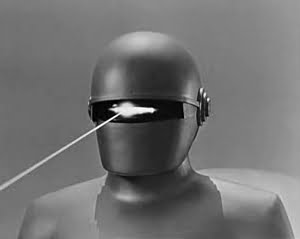Time to break some windows!
A few recent posts have touched on Keynesian economics here and here – well, for those who haven’t heard of the “broken window fallacy”, watch the following video.
Maybe a few points from Wikipedia would help:
- Arguments for public works projects as a way to reduce unemployment. The hidden cost here is of course the tax payer’s money, and the special interests are the jobs created by the public works.
- Arguments for increasing the number of government employees, in order to provide employment.
- Arguments for protectionist measures such as tariffs, subsidies and/or other regulations in order to protect local industries. Eliminating country A’s tariffs on country B’s products would allows country A consumers to buy said products more cheaply, leaving them more money with which to buy other products, and would give citizens of country B more money with which to buy Country A’s products.
- Arguments for instituting a minimum wage, or raising the minimum wage.
- Arguments for wind farms and other renewable energy. While the more expensive sources have environmental benefits, the increased “green jobs” are offset by others in the economy. It might be said that this argument ignores the cost of environmental devastation
- Cash for Clunkers was a program in which the U.S. government paid consumers to trade in low gas mileage cars for newer, higher gas mileage cars, and the trade-ins were subsequently destroyed.
- Depreciation as a means to increase exports by making goods less expensive to foreigners, and to decrease the demand for imports—which are made more expensive—in order to stimulate the domestic economy. What is not seen is the fact that domestic workers must do more work for less pay, and can purchase less with the proceeds. Essentially, the entire nation takes a pay cut.
- Inflation as a means to stimulate economic activity by making savings worth less and goods worth more, creating an imperative to purchase sooner rather than waiting. What is not seen is the increased risk of no cushion of savings, the stimulation of large amounts of consumer debt, and the loss of purchasing power due to salaries lagging inflation.

GorT is an eight-foot-tall robot from the 51ˢᵗ Century who routinely time-travels to steal expensive technology from the future and return it to the past for retroinvention. The profits from this pay all the Gormogons’ bills, including subsidizing this website. Some of the products he has introduced from the future include oven mitts, the Guinness widget, Oxy-Clean, and Dr. Pepper. Due to his immense cybernetic brain, GorT is able to produce a post in 0.023 seconds and research it in even less time. Only ’Puter spends less time on research. GorT speaks entirely in zeros and ones, but occasionally throws in a ڭ to annoy the Volgi. He is a massive proponent of science, technology, and energy development, and enjoys nothing more than taking the Czar’s more interesting scientific theories, going into the past, publishing them as his own, and then returning to take credit for them. He is the only Gormogon who is capable of doing math. Possessed of incredible strength, he understands the awesome responsibility that follows and only uses it to hurt people.
